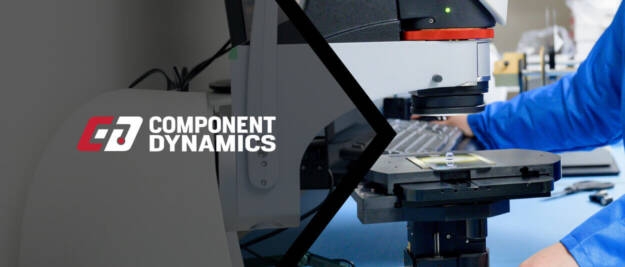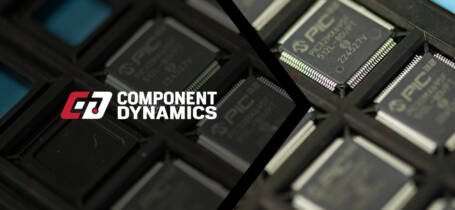
In today’s fast-paced manufacturing landscape, product designs are evolving quicker than ever to enhance speed, provide advanced features, and meet the ever-changing demands of customers. While staying ahead of these advancements is crucial for manufacturers, there are some significant challenges. One of the biggest hurdles is unforeseen obsolescence, which can make the process both difficult and costly.
In this blog post, we delve deeper into the concept of obsolescence management and explore strategies to mitigate risks.
What Is Obsolescence Management?
The Importance of Obsolescence Management
The Shorter Life Cycle of Electronic Components
Best Practices For Obsolescence Management
What Is Obsolescence Management?
Obsolescence management is about mitigating the risks associated with end-of-life and discontinued products, parts, or technologies. The concept is relevant across many industries, especially in electronics manufacturing, with focus on aerospace, defense, automotive, and medical sectors to ensure long-term availability, reliability, and compliance of components and assemblies.
The Importance of Obsolescence Management
Obsolescence management is crucial for keeping reliable products available on a long-term basis. If neglected, manufacturers risk having to deal with:
- Skyrocketing prices to maintain, repair, or obtain parts
- Significant disruptions to operations
- Integration issues with newer technology
- Non-compliance with industry requirements
If managed incorrectly, obsolescence has the ability to negatively impact finance, operations, as well as brand reputation, and other unforeseen consequences. It is recommended that organizations at any scale take steps to avoid these pitfalls starting with appointing an obsolescence manager internally in addition to partnering with independent distribution to bolster existing strategies.
The Shorter Life Cycle of Electronic Components
Here are some reasons why electronic components often have a shorter lifespan and require obsolescence management:
- Cost: As manufacturers aim to reduce production costs, they may opt for cheaper materials and streamlined production of less durable components, leading to a shorter lifespan.
- Advancements in technology: Newer technologies are constantly being developed, making existing parts obsolete at a pace faster than any other time in history.
- Miniaturization: Devices continue to become more compact and complex, pushing the boundaries of Moore’s Law while phasing out older yet reliable technologies.
- Supply chain disruptions: Shortages and supply chain disruptions can impact management decisions to consolidate product lines and/or accelerate end of life notices.
- Regulation changes: Changing industry standards can impact certain components making them non-compliant, requiring readily available alternatives.
Best Practices For Obsolescence Management
We’ve established that obsolescence management is crucial for maintaining product longevity, but how do you effectively follow through with the concept? Here are six best practices to help you proactively address and mitigate the challenges of product obsolescence.
- Look ahead by utilizing an obsolescence management plan. A structured approach will allow you the foresight to see which components, parts, and technologies within a product or system will become obsolete in the coming years. This often involves monitoring, risk assessment, mitigation strategies, lifecycle planning, supplier collaboration, and compliance and regulatory monitoring.
- Appoint an obsolescence manager who is responsible for overseeing the supply and demand of specific products. This person should be equipped to address end-of-life products as efficiently as possible, ideally before they become problematic.
- Keep open lines of communication with component manufacturers. This includes setting up end-of-life alerts for key parts and staying in regular contact with both franchise and independent distribution. This way, obsolescence issues and changes in production are addressed early on with lower financial impact.
- Maintain an up to date BOM (Bill of Material) with mechanical components, hardware, software, raw materials, as well as updated lifecycle information and supply data for at risk components. Staying organized is the best defense against unexpected obsolescence.
- Routinely assess technology assets to identify potential problems and optimize performance. To better identify components becoming obsolete, implement comprehensive tracking systems, and utilize predictive analytics and market research. By working with reputable suppliers who can incorporate your BOM lifecycle data into their ERP system you can receive actionable recommendations and alerts as products become available in the market.
- Integrate new parts to improve performance, reliability, and compatibility with new technologies. Upgrading parts keeps a manufacturer in line with industry standards and reduces the frequency of obsolescence.
In today’s fast-paced manufacturing landscape, staying ahead of advancements is crucial. Implementing these best practices can be incredibly helpful in navigating the complexities of product obsolescence. To minimize your obsolescence risk, and enhance or develop your company’s existing strategies, contact us at Component Dynamics to conduct a review of current practices and allow us to answer any questions you may have about your unique sourcing, excess inventory, and warehousing strategies from our global supply chain experts.
Learn more about our component sourcing solutions.

